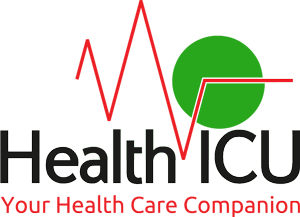The National Fire Protection Association (NFPA) provides risk-based safety guidelines for hospitals, medical facilities, and dental offices. NFPA 99 pertains to regulations for medical gas equipment. NFPA-99 provides oversight for maintenance, performance, installation, testing, safety practices, and inspection.
History
For many years, hospitals were governed by the 2012 edition of NFPA 99. However, several changes were made in the 2018 edition. NFPA 99 calls for an annual evaluation of all medical gas systems. It’s difficult for hospital administrators to keep up with the rules and regulations. Hence, it’s quite common to hire a company to evaluate systems.
What are Medical Gases?
Medical gases are invaluable to a hospital. Most procedures could not be performed without the use of gas. For example, do you know what medical air is? Medical air is a sterile supply of compressed air used to distribute medical gas.
Instrument air is purified by medical air that can be used instead of nitrogen. Instrument air is used to power surgical tools and operate pneumatic brakes and tables. Oxygen is required in all healthcare facilities to stabilize patients and for therapy.
Carbon dioxide is used to enlarge parts of the body for laparoscopic and arthroscopic surgeries. Nitrogen is a staple for cryogenic surgeries to remove cancers and other skin lesions. It’s also used to store tissues and cells.
Nitrous oxide, laughing gas, is used in many dental offices and hospitals to relieve pain. The Centers for Medicare and Medicaid Services only grant accreditation to hospitals that follow the NFPA-99 code.
Changes will Impact Dental Offices
NFPA 99 makes risk categories based on the severity of damage if there were a problem. Chapter 5 includes changing the risk category for dental offices.
Dental offices used to be in category 3 which means “system failure or damage would not likely cause harm to patients or caregivers.” Dental offices are now included in category 1 which states “system failure or damage could result in major injury or death.
” Risk factors in dental offices needed changing because NFPA 99 used to be an occupancy-based document. Now, NFPA 99 is based on risk and dental offices clearly needed to be reworked.
Modifications for Vacuum Filtration
Recent modifications updated rules on vacuum filtration. Filters must now be 99.97% high efficiency. Further, the experts want manufacturers to put inlet filtration on the patient side of a vacuum producer.
There’s a concern that bacteria can travel from the patient to the mains supply. One change was made to the entire document. The term “governing body” was changed to the “healthcare facility’s governing body.”
Medical Facility Oxygen Production
Requirements are added that allow hospitals to use oxygen concentrators as central supply sources for piped gas. Most U.S. hospitals use oxygen concentrators sparingly. However, the change was necessary to clarify the rules for remote hospitals in Hawaii and Alaska. Most U.S. hospitals use a cryogenic fluid central supply system, which is monitored by specialist sensors from sites like https://temp-pro.com/2024/07/31/cryogenic-temperature-sensors-precision-in-extreme-conditions.
Corrugated medical tubing (CMT) will be allowed for use in medical gas and vacuum systems. This gives contractors a new option for the installation of delivery systems.
Many contractors prefer CMT because it’s less expensive, easier to install, and more resistant to contamination than other materials. For example, contractors say copper tubing is expensive and gets contaminated easily.
Patients and staff need to be protected from possible medical gas system failure. Indeed, explosions and fires can occur. NFPA 99 is continually updated to meet the evolving needs of medical and dental facilities.



